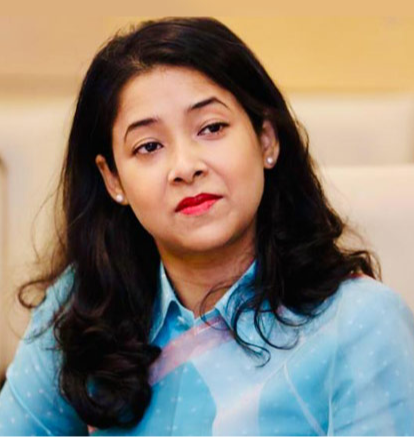-
CENTRES
Progammes & Centres
Location
 PDF Download
PDF Download 
Aparna Roy, Ed., Making Climate Action Count: Gender in the Mainstream of Urban Climate Strategies, March 2025, Observer Research Foundation.
India’s cities are at the epicentre of rapid urbanisation and intensifying climate risks. Urban climate impacts are escalating, straining already inadequate infrastructure and deepening existing inequalities. At the heart of this crisis is a critical yet often overlooked truth: climate change is not gender-neutral. Women, particularly those from marginalised and low-income communities, bear the brunt of climate-induced disruptions while having limited access to decision-making spaces that shape urban resilience.
As groundwater sources dwindle, women in informal settlements spend a disproportionate amount of time fetching water for their household. They are also more vulnerable to heat stress, given their overrepresentation in informal labour sectors such as domestic work, street vending, and construction, where exposure to extreme temperatures and air pollution directly impacts their health. When floods and disasters displace families, women’s access to sanitation, reproductive healthcare, and personal safety is often compromised. Mobility constraints, unsafe public transport, and the absence of gender-sensitive urban planning further restrict their economic opportunities. Yet, despite being among the most affected, women are rarely seen as agents of change in climate action.
The failure to integrate gender into urban climate policies is not just an oversight—it is a fundamental barrier to sustainable and inclusive resilience-building. If Indian cities are to withstand the climate crisis, they must recognise and prioritise women’s leadership, expertise, and agency in shaping solutions. This requires moving beyond tokenistic representation to embedding gender equity at every level of climate governance, urban planning, and economic transition.
This volume, Making Climate Action Count: Gender in the Mainstream of Urban Climate Strategies, brings together experts to examine the intersection of gender and climate resilience across urban sectors. The chapters discuss the barriers that women face in accessing, adopting, and leading climate solutions and offer policy recommendations to embed gender-responsive strategies in India’s urban climate agenda. Each contribution addresses key questions: How do we build urban infrastructure that centres the needs of women? How can policy frameworks support gender-responsive climate action? What role do women themselves play in driving solutions?
Though the transition to clean energy presents an opportunity to create a more equitable urban future, women continue to face systemic barriers in accessing, adopting, and leading energy solutions. Neha Kumar examines how gender-responsive energy policies can accelerate a just and inclusive transition in cities, ensuring that women are not left behind in the shift to renewables. However, access to energy is closely tied to water security, particularly in urban areas, where climate-change-induced water stress exacerbates existing gender inequalities.
Building on this, Namrata Kabra and Ambika Vishwanath highlight how women bear a disproportionate burden in urban water access, distribution, and governance. They explore how climate change heightens these challenges and argue for the increased inclusion of women in decision-making to create more sustainable water-management systems. Water security, in turn, is deeply connected to urban food systems; disruptions in water availability impact women-led food supply chains, urban agriculture, and nutrition security.
Shoba Suri and Subhashree Ray, in their article, examine how climate risks threaten urban food security, disproportionately affecting women’s ability to provide for their families and communities. They propose interventions to enhance women’s agency in food systems and to ensure their leadership in shaping climate-resilient urban nutrition strategies. For women to participate meaningfully in these sectors, they must have access to safe, affordable, and sustainable mobility options in cities.
Aishwarya Raman’s essay follows, where she examines how gendered mobility patterns impact women’s access to education, employment, and economic opportunities. The author discusses the need for inclusive transport systems that accommodate women’s unique mobility needs while contributing to climate-resilient urban infrastructure. Mobility is also crucial in the context of urban health, as women’s ability to seek timely medical care is often constrained by inadequate transport and climate-related health risks.
In the sixth chapter, Vanshica Kant explores how climate change impacts, such as rising temperatures, air pollution, and vector-borne diseases, exacerbate health disparities among women in urban environments. She calls for gender-responsive health policies that address these risks and build more inclusive urban healthcare systems. Health outcomes are further shaped by disaster preparedness and response, particularly in cities that are prone to climate shocks.
Madhurima Sarkar-Swaisgood, for her part, examines how past urban disasters highlight the need for women-led, community-driven approaches to disaster risk reduction. She argues that integrating women’s voices in resilience planning can enhance cities’ ability to withstand climate shocks. However, beyond disaster response, long-term resilience depends on recognising and valuing women’s unpaid and underpaid labour in urban economies.
Mitali Nikore then discusses how climate change intensifies burdens on women in the care economy, both paid and unpaid. She emphasises the need for policy measures that acknowledge and support women’s contributions to caregiving, positioning care work as a critical component of climate adaptation strategies. Urban ecosystems are vital in building climate resilience, yet women’s participation in urban greening and nature-based solutions remains limited.
Roshni Nuggehalli examines the barriers that prevent women from actively contributing to urban greening and ecosystem restoration efforts. She highlights the value of traditional ecological knowledge in shaping sustainable urban landscapes and calls for greater inclusion of women in climate adaptation initiatives. Ultimately, a holistic approach to gender and climate action in cities requires structural changes in urban planning and governance.
Ashali Bhandari closes the compendium with an article that underscores the importance of gender-responsive urban planning in ensuring climate-resilient and socially inclusive cities. She identifies critical gaps in current planning frameworks and emphasises the need to integrate women’s perspectives in urban design and climate adaptation efforts.
Read the monograph here.
The views expressed above belong to the author(s). ORF research and analyses now available on Telegram! Click here to access our curated content — blogs, longforms and interviews.

Aparna Roy is a Fellow and Lead Climate Change and Energy at the Centre for New Economic Diplomacy (CNED). Aparna's primary research focus is on ...
Read More +